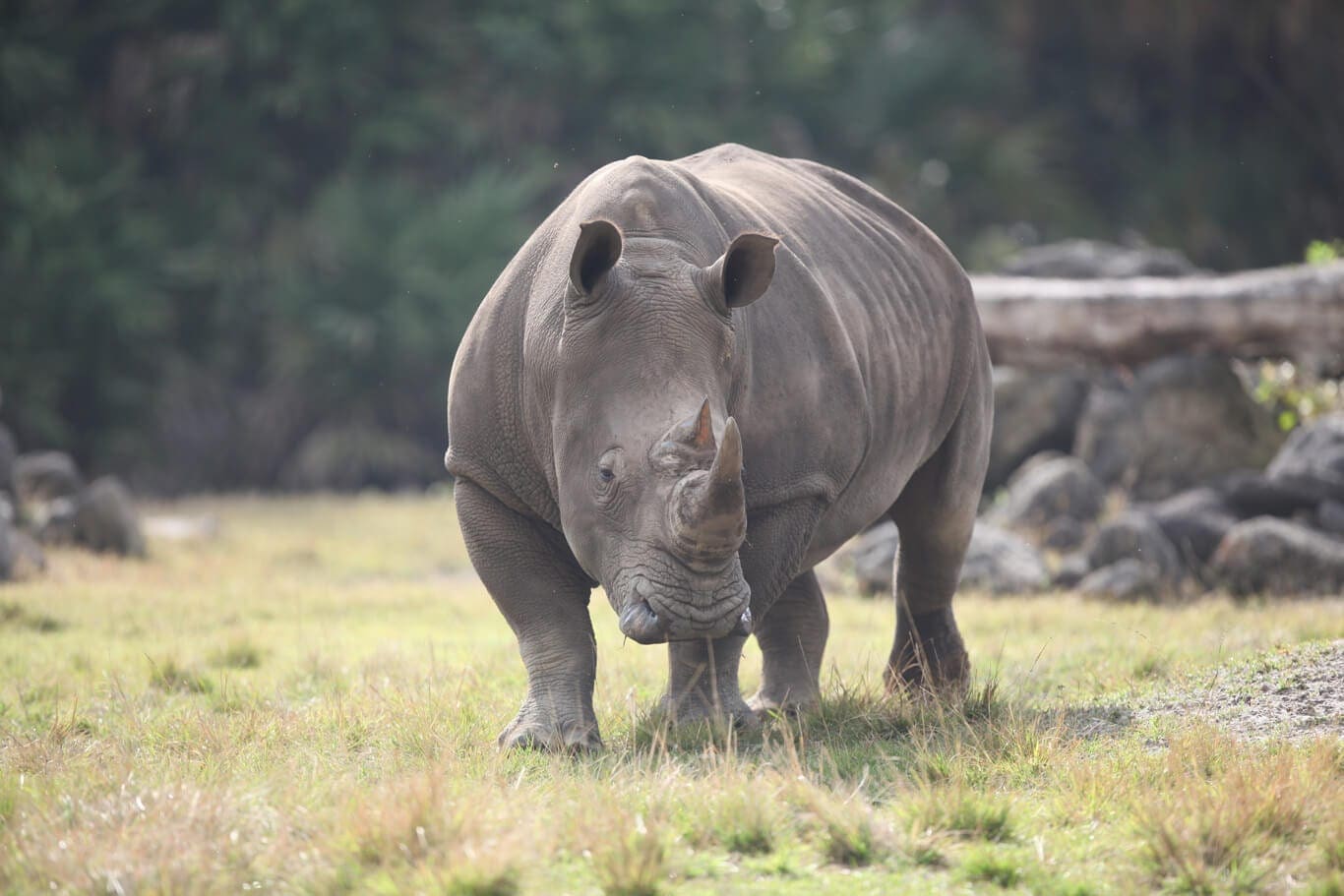

The English word “white” is said to have been derived by mistranslation of the Dutch word “wijd”, which means “wide” in English. The white rhino is particularly vulnerable to hunting, because it is a large and relatively unaggressive animal with very poor eye sight.Ī popular albeit widely discredited theory of the origins of the name “white rhinoceros” is a mistranslation from Dutch to English. Historically the major factor in the decline of white rhinos was uncontrolled hunting in the colonial era, but now poaching for their horn is the primary threat. Before giving birth, the mother will chase off her current calf. The birth interval for the white rhino is between two and three years. It will continue to feed in this way for approximately 12 to 18 months, after which it is fully weaned. It will survive solely on that rich milk for about a week, after which it will be introduced to soft grasses and foliage. A single calf is born and usually weighs between 40 and 65 kg (88 and 143 lb). The gestation period of a white rhino is 16 months. Reproduction is a slow process for rhinos, since the mother will only carry one calf at a time.


Sub-adult males will congregate, often in association with an adult female. White rhinoceroses live in crashes or herds of up to 14 animals (usually mostly female).

The white rhinoceros is quick and agile and can run 50 km/h (31 mph). The animal makes much use of shade trees for resting. White rhinos can go up to five days without drinking, because they get some moisture from the grass they eat. They are considered grazers, because they will eat constantly throughout the day, rather than having set meals. White rhinos eat short grass and some leaves. White rhinos are diurnal, and most active during the day. The white rhinoceros has the widest set of nostrils of any land-based animal. The olfactory passages that are responsible for smell are larger than their entire brain. Its ears can move independently to pick up sounds, but it depends most of all on its sense of smell. White rhinos have a distinctive broad, straight mouth which is used for grazing. It also has a noticeable hump on the back of its neck. The front horn is larger and averages 60 cm (24 in) in length, reaching as much as 150 cm (59 in) but only in females. On its snout it has two horn-like growths, one behind the other. The color of the body ranges from yellowish brown to slate grey. It is the only rhinoceros in which males are noticeably larger than females. The head and body length is from 3.4 to 4 m (11.2 to 13.1 ft), with the tail adding another 70 cm (28 in) and the shoulder height is 160 to 186 cm (5.25 to 6.1 ft). The white rhinoceros is the largest species of rhinoceros. White rhinoceros can live to be up to 50 years old. They usually live near water sources because they generally consume water as often as twice a day. White rhinoceroses are found in grassland and savannah habitat. About 98.5% of white rhinos live in just five countries: South Africa, Namibia, Zimbabwe, Kenya and Uganda.


 0 kommentar(er)
0 kommentar(er)
